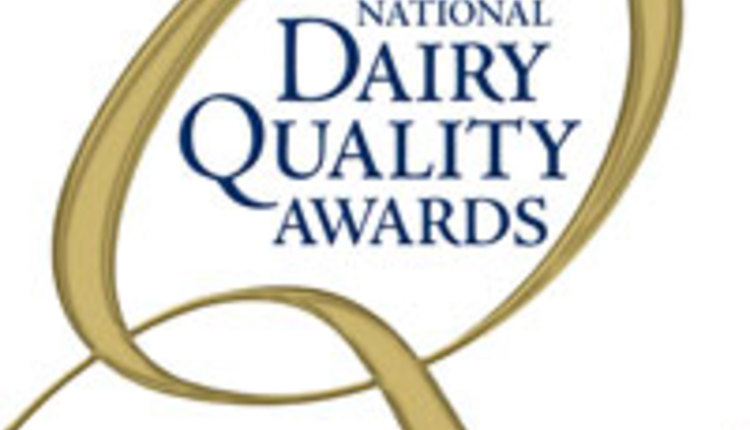
Modest growth forecasts, shifting consumer tastes and increased domestic competition mean dairy executives will need to look for new models at home and abroad to capture growth, according to new research from McKinsey & Company released today at Dairy Forum 2019 in Orlando, Florida. In a presentation to nearly 1,000 dairy executives from across the country, McKinsey consultants concluded that future growth in the competitive dairy landscape will require a bold outlook and a winning combination of new strategies.
Today’s presentation, “Resilience and Growth: Perspectives from McKinsey & Company,” revealed independent research that McKinsey conducted last fall, in partnership with the International Dairy Foods Association. It captures insights from in-depth interviews with 30 CEOs of international dairy companies and findings from a survey of more than 1,000 American households to chart the consumer preferences that are shaping the domestic dairy market.
“The success of our industry lies in our ability to partner together to move dairy forward. Sharing these findings at IDFA’s Dairy Forum, the industry’s largest gathering, provided an excellent capstone to our deep discussion of dairy’s future,” said Michael Dykes, D.V.M., IDFA president and CEO. “This is just the start of the way we’ll use these findings to transform our industry for continued prosperity.”
“With the right mix of scale and innovation, the industry can use these data-driven strategies to transform opportunities into advantages, secure new pockets of U.S. market growth and prepare for long-term success in international markets,” said Roberto Uchoa de Paula, senior partner at McKinsey and presenter at Dairy Forum.
Uchoa de Paula, along with Ludovic Meilhac, partner, and Christina Adams, associate partner, told Dairy Forum attendees that U.S. dairy manufacturers have the option of chasing international opportunities or competing for share in their home market, which is increasingly competitive and slow growing.
Based on the research, the consultants believe U.S. dairy companies should consider four strategic responses – innovating to capture domestic growth, revamping the supply chain to serve a new type of demand, exporting to markets with high projected dairy deficits and attractive trade agreement groundwork, and investing directly in deficit markets to maximize long-term success – to create a winning growth formula for dairy.
Dairy companies are better positioned to compete in the domestic dairy environment, the consultants said, if they adopt a strategy that combines innovation that supports a diverse range of consumer preferences along with a revamped supply chain to serve new types of demand.
Dairy companies can meet these new demands by strategically responding to six major factors shaping the market: Consumers’ desire to explore new or different brands and experiences, the growing volume of consumer data and highly personalized microsegments, the proliferation of smaller brands, consumers’ focus on health and wellness, the shifting retail landscape and rising commercial costs.
Tactics that comprise a winning strategy, the consultants said, include a focus on identifying growth spaces through analytics, making quick and small investments instead of big bets and investing in new supply chain capabilities.
However, even the most impressive innovators will be hard pressed to gain major growth at home, the consultants said. Their findings revealed that globally focused companies have increased their revenues significantly from 2007 to 2018, while those active in local markets have seen their revenues fall. Dairy’s future is global, the consultants stressed, and the greatest gains lie in markets beyond American borders, primarily in Africa and Asia.
U.S. dairy companies with an international presence will need to pursue a two-pronged strategy to expand their global footprint, the consultants said. Dairy companies must first adopt a strong defensive strategy to maintain their footholds abroad, proactively managing risk with a robust toolkit of financial and demand-hedging tools. Companies must also play offense, capturing growth not only by focusing on growing exports but also by devising a long-term strategy for developing capital, talent and products.
When defensive risk management and proactive investment are combined, the consultants said, companies can unlock a positive cycle of global growth.
McKinsey & Company will soon release a white paper titled “A winning growth formula for dairy” that highlights the research findings and suggested responses in more detail. Contact Heather Soubra, IDFA chief of staff, at hsoubra@idfa.org to request a copy.
The International Dairy Foods Association (IDFA), Washington, D.C., represents the nation’s dairy manufacturing and marketing industry, which supports nearly 3 million jobs that generate more than $161 billion in wages and has an overall economic impact of more than $628 billion. IDFA members range from multinational organizations to single-plant companies. Together they represent approximately 90 percent of the milk, cultured products, cheese, ice cream and frozen desserts produced and marketed in the United States and sold throughout the world. The diverse membership includes numerous food retailers, suppliers, cooperatives and companies that offer a wide variety of nutritional dairy products and dairy-derived ingredients. Visit IDFA at www.idfa.org.

